Kia reveals production-ready, next-gen Niro EV
We last had a glimpse of what the next-generation Kia Niro would look like with a concept preview in late 2021, and now Kia has revealed the series production car with the EV variant leading the show.
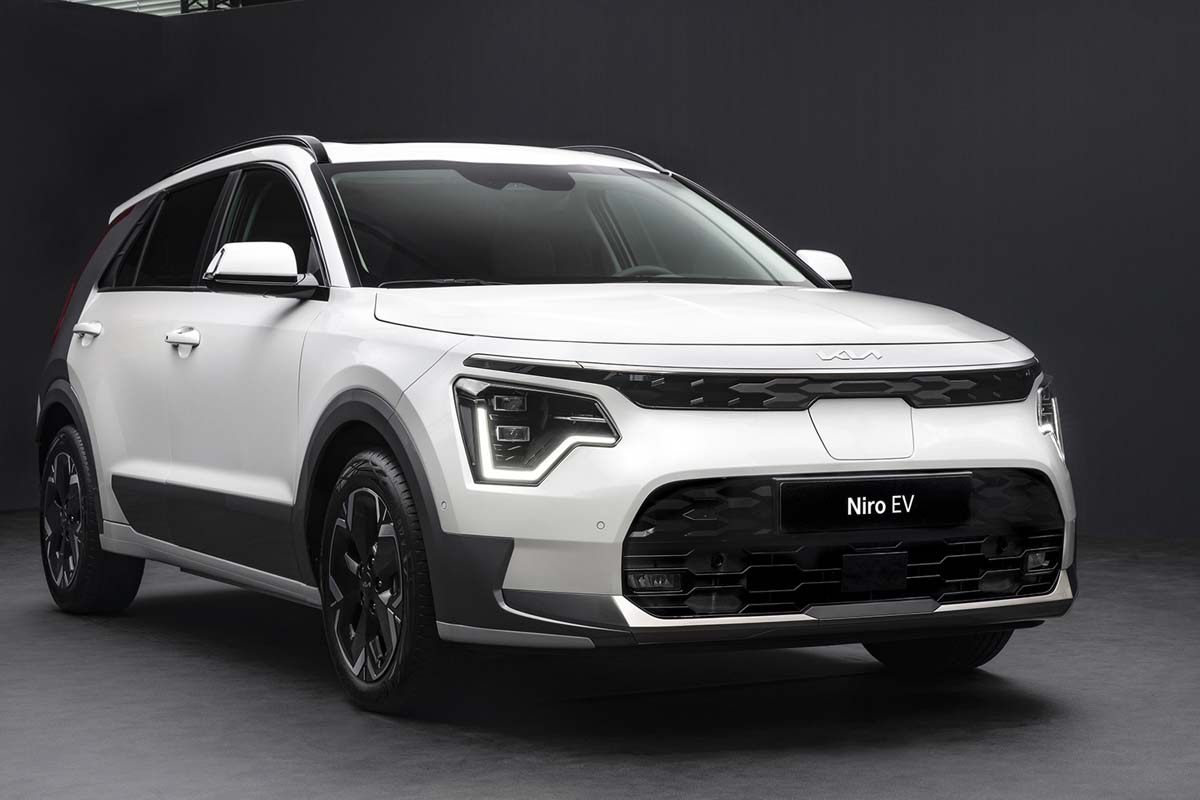
Kia claims that the all-new Niro will smooth the transition to sustainable mobility with hybrid electric (HEV), plug-in hybrid (PHEV) and battery electric (BEV) variants. The HEV and PHEV versions will have power delivered primarily from a 1.6-litre petrol engine, while the EV version claims a 463km range as measured on the WLTP cycle.
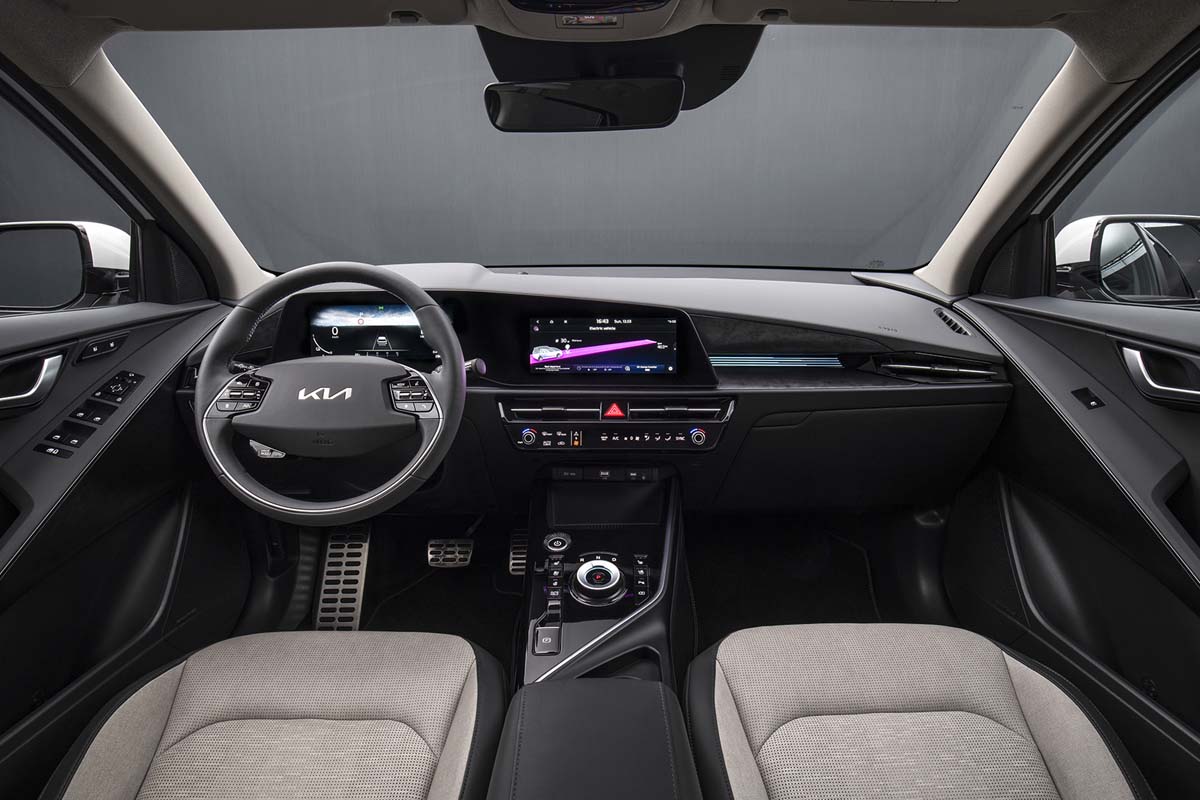
At 4,420mm long and 1,825mm wide, and up to 1,570 high, the redesigned Niro is built upon the Hyundai Motor Group’s K3 platform. The same chassis also underpins the current Hyundai Avante . The Niro’s 2,720mm wheelbase (the space between the front and rear wheels) is actually identical to the Avante’s, though the chunkier styling of the Niro makes it appear visually shorter.
Kia’s signature Tiger Face front end is retained and has been further enlarged to now extend from the hood down to the front fender. Angular daytime running lights add to the car’s external signature look, while a skid plate that’s purely cosmetic give the car some SUV-like character even though it’s really not a car that you can go off-road driving in.
The EV version is distinguished by a two-tone closed grille and unique steel grey side cladding. The plug-in charging port is positioned in the centre of the front grille for easy access at all charge points.
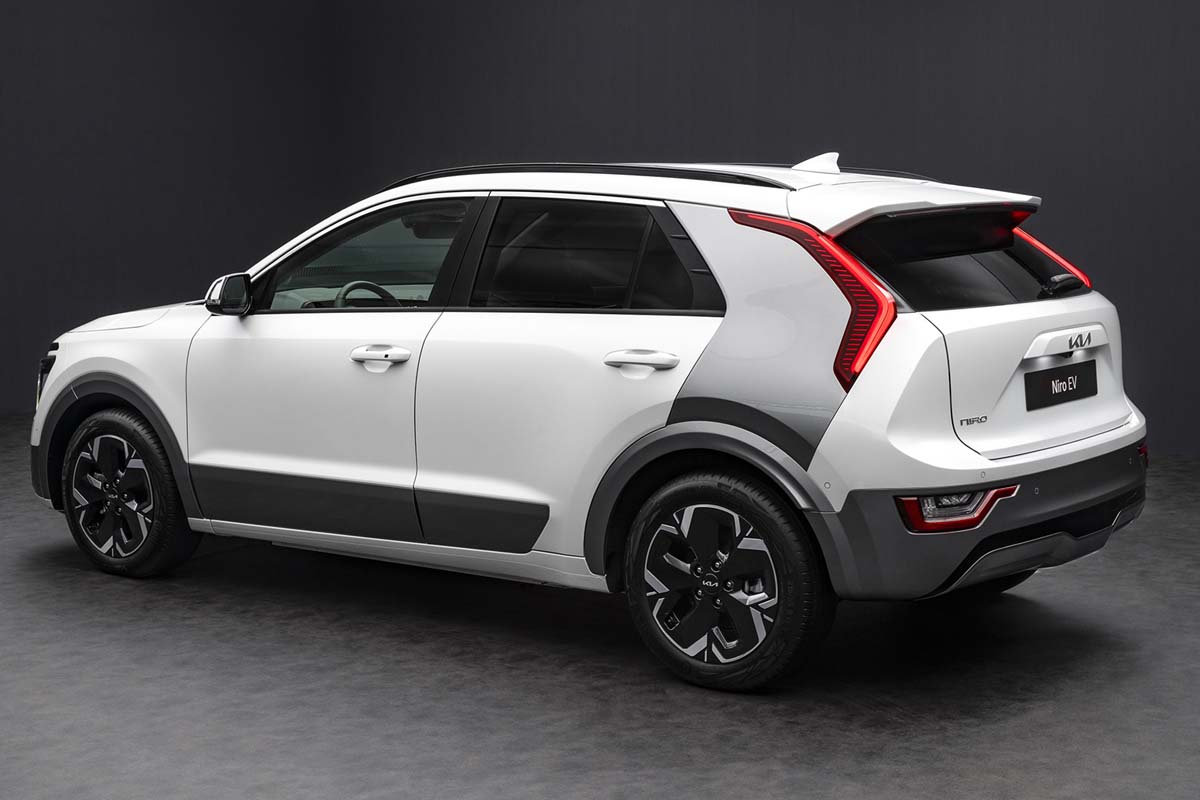
Some serious aerodynamic tuning at the design stage gives the Niro EV a commendable drag coefficient of 0.29cd. It’s not as slippery as the BMW iX’s 0.25cd, but for a mainstream EV the Kia Niro is doing very well.
Boomerang-shaped LED taillights and what appears to be a totally cosmetic, non-functioning diffuser round off the car’s rear end design.
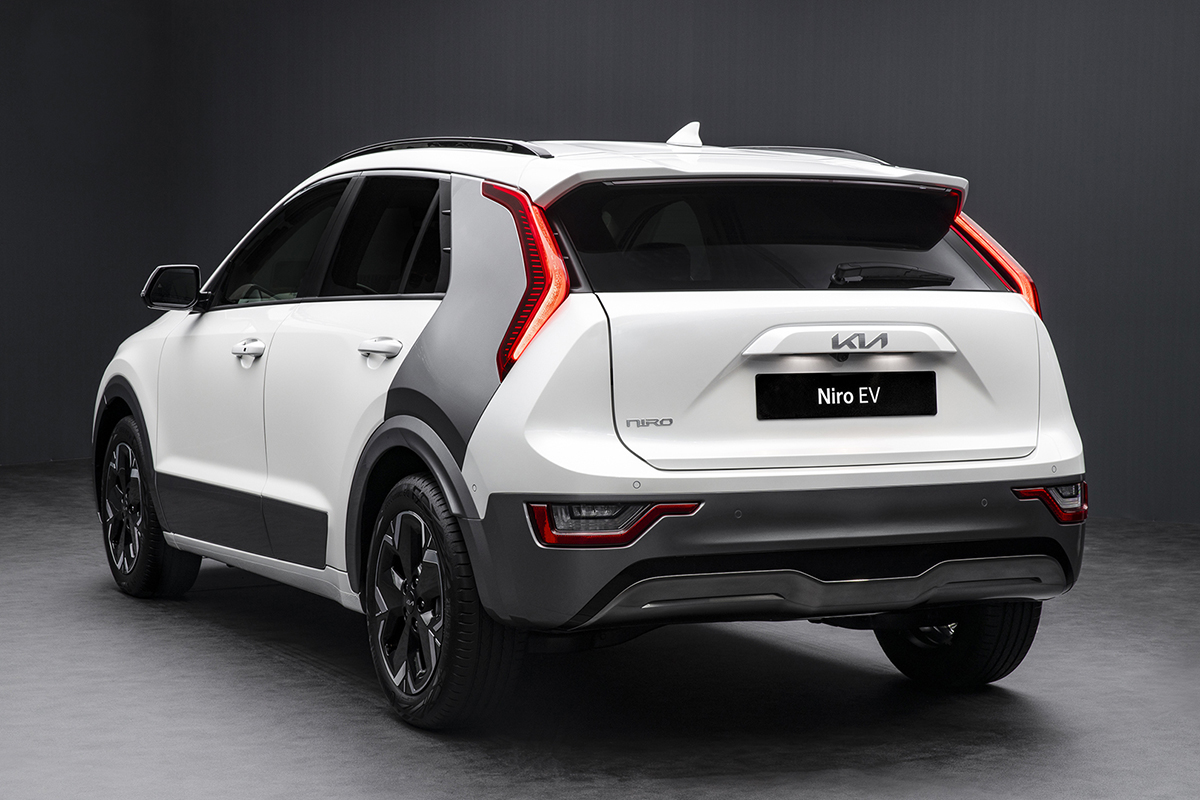
Kia claims that ‘premium-effect’ recycled materials are used in the cabin, to properly underline the new Niro’s sustainable credentials. What we do see is minimal clutter and smooth lines, the #nowtrending design language of electric cars.
A heads-up display instrumentation is apparently standard fit. A lot of the design componentry is carried over to the PHEV and petrol-electric variants so even if you don’t buy the EV variant you’ll still get some of that snazzy ‘EV feel’ in the cabin.
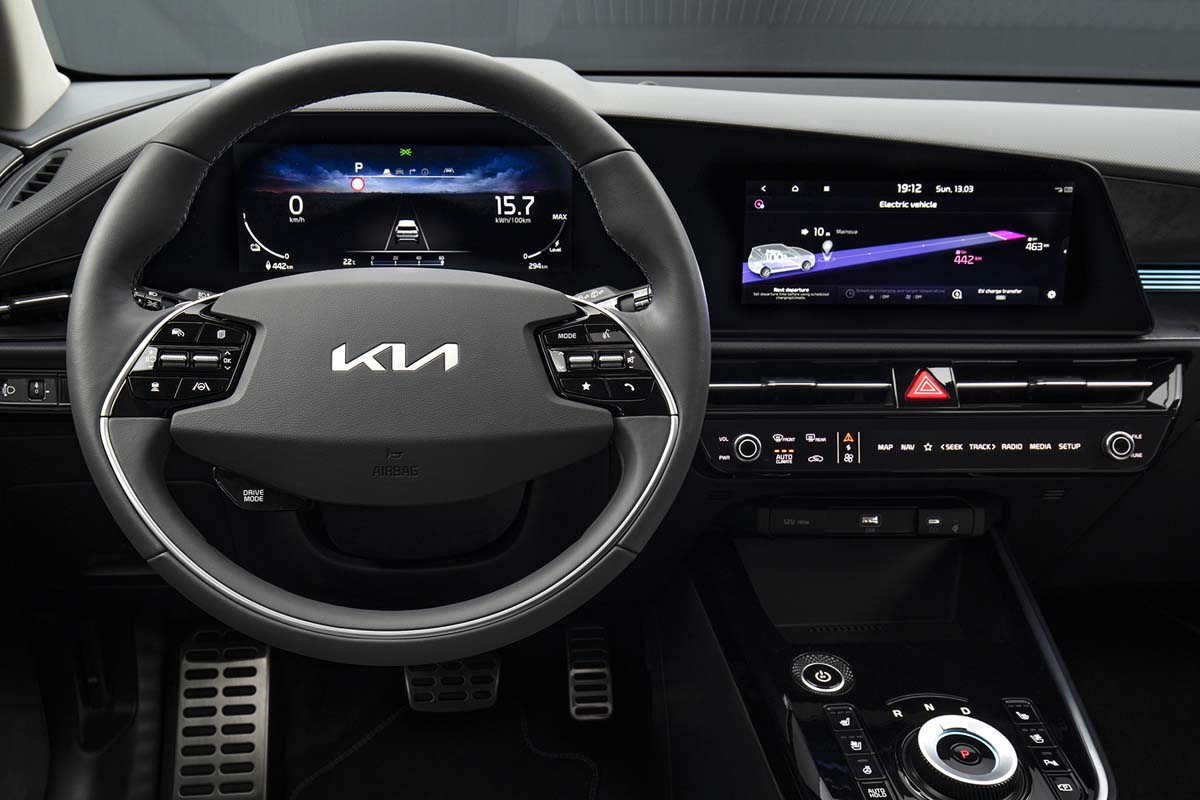
Kia has recently been big on active safety in its cars, and the new Niro predictably takes it up another notch. Kia’s DriveWise intelligence Advanced Driver Assistance Systems (ADAS) is the long name for its safety suite, which includes Forward Collision-Avoidance Assist plus Junction Turning and Junction Crossing functions that provide an added layer of safety when negotiating turns. It can automatically stop the vehicle when there is an immediate danger of a collision at traffic light junctions.
Forward Collision-Avoidance Assist (FCA) will deliver an audible and visual warning (or even brake) to the driver if the system detects a possible collision with other road users or pedestrians.
When navigating junctions, using Niro’s turn signal will activate the Junction Turning function, and in Niro EV a Junction Crossing function also assists the driver. The system will warn if there is a possibility of collision with another vehicle either from oncoming or side traffic. If the system has issued a warning, but the driver takes no action, it will automatically apply the brakes to avert an impact.
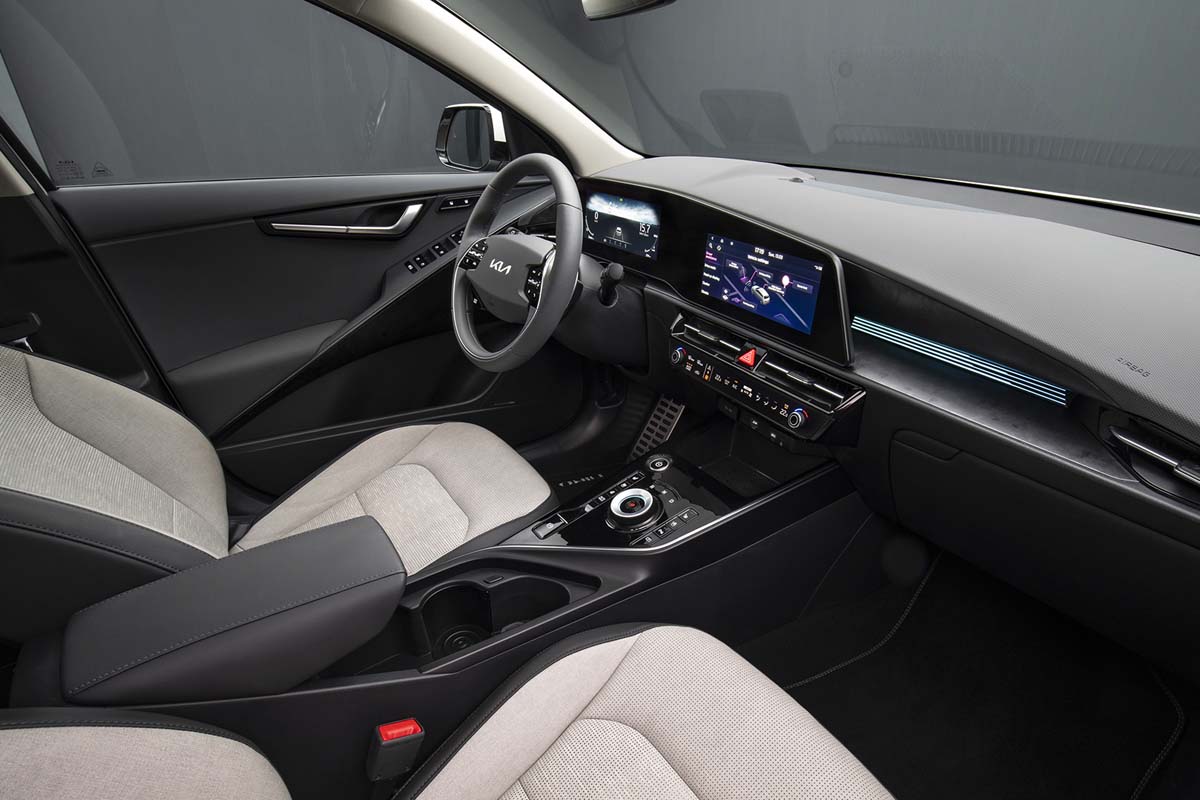
Niro’s front view camera and inbuilt navigation system work in conjunction to display the current speed limit. The Intelligent Speed Limit Assist (ISLA) system will display current speed and issue a visual warning if the vehicle is exceeding the speed limit.
Also keeping Niro occupants safe on the roads are other ADAS features, including Lane Keeping Assist (LKA), Lane Following Assist (LFA), Highway Driving Assist (HDA), Driver Attention Warning (DAW), High Beam Assist (HBA), Navigation-based Smart Cruise Control-Curve (NSCC-C), Blind-Spot Collision-Avoidance Assist (BCA), Rear View Monitor (RVM) and Rear Cross-Traffic Collision-Avoidance Assist (RCCA).
It also offers Remote Smart Parking Assist, a feature that enables the vehicle to park itself autonomously by moving in straight lines back and forth using surround-view cameras and ultrasonic sensors. Once parked, Safe Exit Assist provides a warning when a vehicle is approaching from the rear-side when getting out of the vehicle, with an electronic child lock preventing rear-seat passengers from opening the rear door.

The Niro EV produces 150kW of power and has instant torque rated at 255 Nm. With a top speed of 167km/h and 0-100km/h taking just 7.8 seconds, the Niro EV will enable drivers to make effortless and smooth progress in all conditions. Topping up the Niro EV’s 64.8kWh lithium-ion polymer battery from 10-80 percent takes just 43 minutes with a suitable DC rapid charger.
The petrol-electric hybrid variant has a combined maximum power output of 141 horsepower when combined with the HEV’s 32kW permanent magnet synchronous electric motor. A 62kW e-motor in the PHEV version results in a maximum combined output of 183 horsepower and provides an electric-only range covering up to 65km, which is adequate for most to and from work commutes.
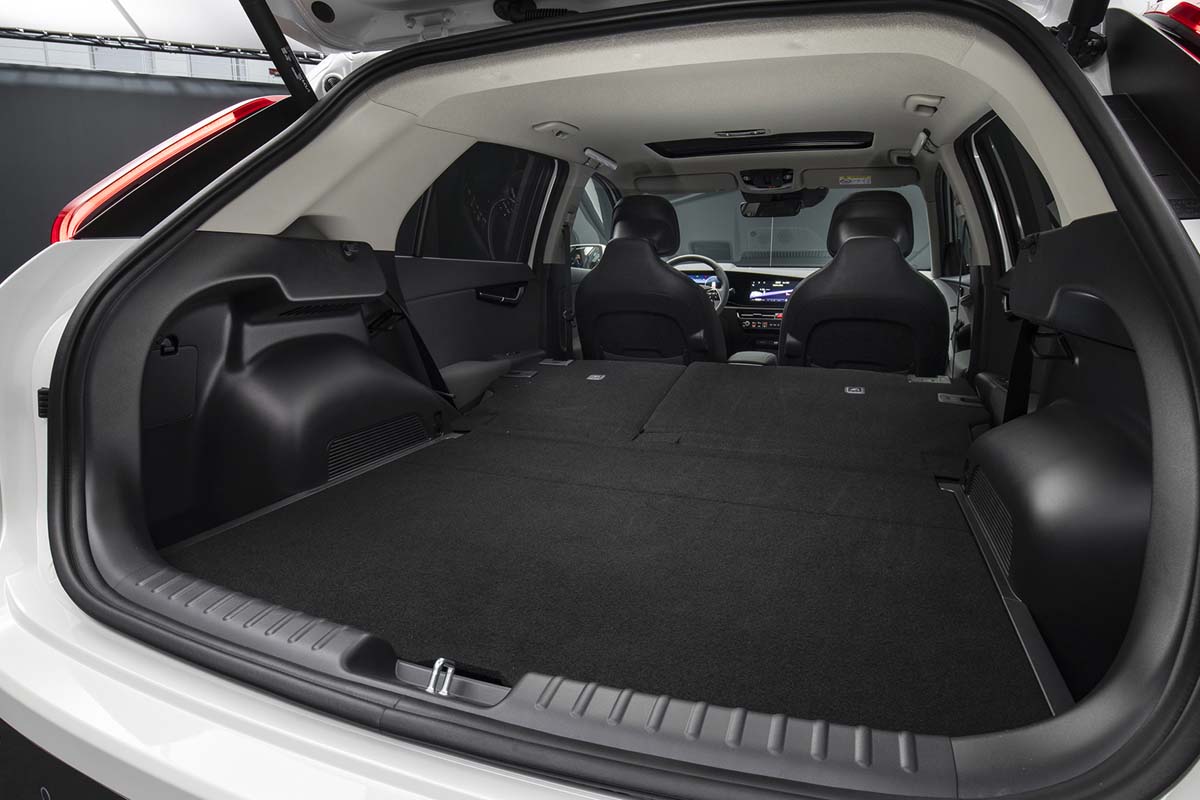
Both hybrid variants have six-speed dual-clutch six-speed dual-clutch transmissions. What’s unique about the transmissions is that the cars no longer have a dedicated reverse gear, saving 2.3kg from the gearbox. Reverse motion is instead drawn solely from the electric motor, running in reverse polarity.
Similar to systems pioneered by BMW, an intelligent Green Zone Drive Mode on Niro Hybrid and PHEV automates the use of electric power by taking location guidance from the navigation system, driving pattern learning or manual driver input.
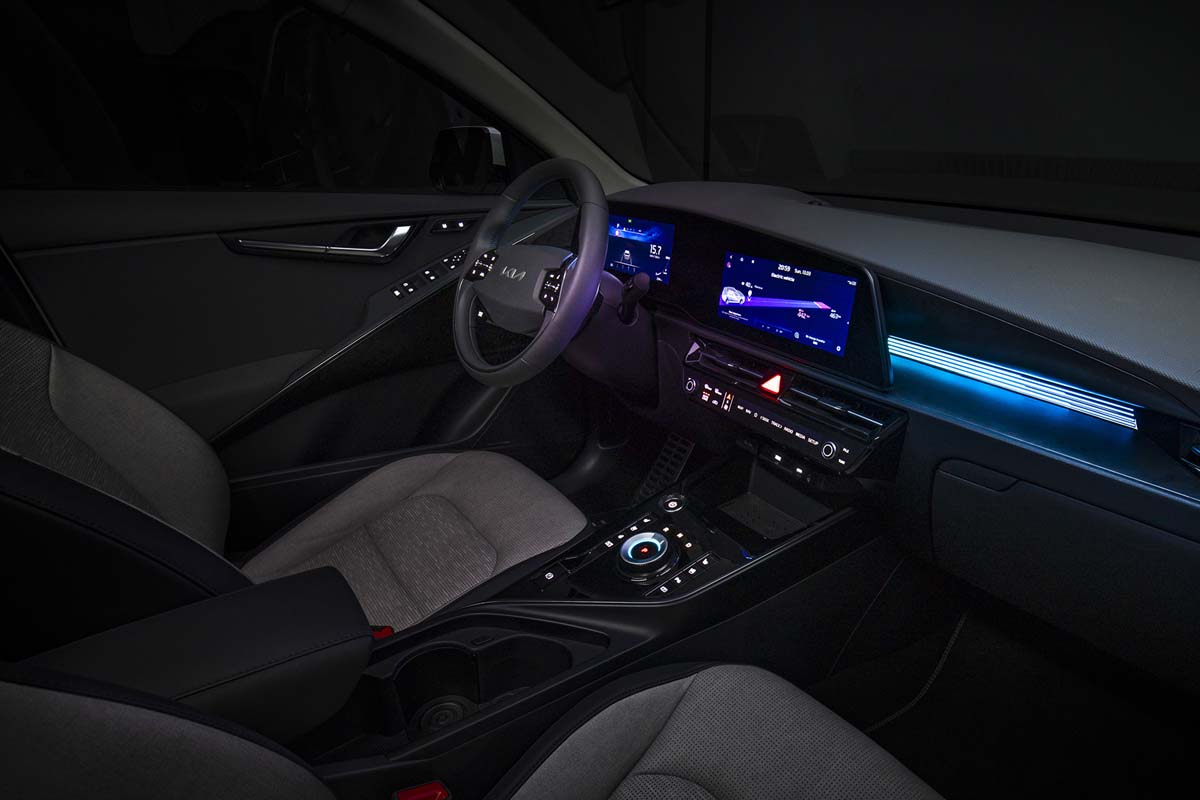
When the car is being driven in built-up areas or roads nearby schools and hospitals, the vehicle automatically switches to electric-only driving to reduce the exhaust emissions to zero in these environments. How this system could work in a small country like Singapore where almost every part is built-up remains to be seen.
It’s early days yet so Cycle & Carriage Kia has no details of which variants will be confirmed for sale in Singapore and when they will be arriving. Our best guess is that the petrol-electric hybrid and EV will make their appearance here before the end of 2022.












Leave a Reply